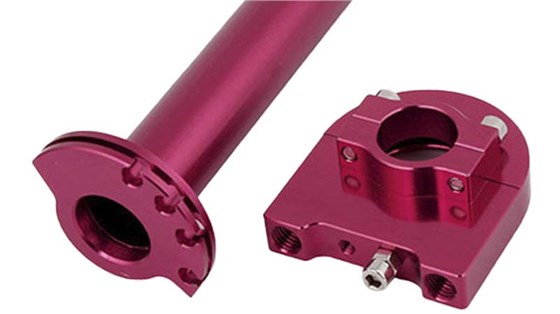Mastars is a global manufacturer of plastic and metal products from prototype design to mass production for many Fortune 500 enterprises. The production process includes CNC processing, vacuum casting, 3D printing, sheet metal, forging, extrusion, etc.

The forging process of stainless steel has the following characteristics:
(1) Poor thermal conductivity. Stainless steel contains a lot of alloy elements such as chromium, nickel, manganese and titanium, so its thermal conductivity is poor. The more alloying elements, the worse the thermal conductivity. Below 800 ℃, its thermal conductivity is about 20% lower than that of ordinary carbon steel and alloy steel? The thermal conductivity of 50% at high temperature is similar to that of magnetic steel and alloy steel. Strictly control the heating temperature and heating speed during heating.(2) Low plasticity. The plasticity of stainless steel decreases with the increase of temperature, especially with the increase of martensite temperature. The heating shall be uniform to avoid cracking due to uneven deformation. When forging this kind of steel, its deformation degree shall be less than 60%, and the tools used must also be preheated to 200 ~ 250 ℃. When forging stainless steel ingot, it shall be lightly and quickly forged first, and then hammered through gradually, and the surface cracks shall be removed in time.
(3) Large deformation resistance. Stainless steel has great deformation resistance at high temperature. Therefore, large tonnage equipment and wear-resistant die materials need to be used when forging stainless steel. The high temperature resistance of stainless steel is between nickel base superalloy and general alloy structural steel, and increases with the increase of deformation degree, so too much deformation degree can not be adopted.
(4) The recrystallization temperature is high. Therefore, the forging temperature range of stainless steel forgings is very narrow, which is prone to overheating and overburning. Therefore, the forging temperature range should be strictly controlled. The forging temperature range of stainless steel is only about 250 ℃, and some are slightly wider.
(5) Large size shrinkage. The main reason is that the linear expansion coefficient of austenitic steel is large. Therefore, when the forging is finally formed, the size of the forging should be controlled according to the large shrinkage rate to avoid scrapping due to insufficient size after cooling.
Mastars' rapid prototyping service can provide various forging prototyping services according to customers' needs, verify your designed, provide fast, efficient and cost-effective services, and lay the foundation for future mass production of your products.
Mastars Industries CO., LTD
www.mastars.com
Email: marketing@mastars.com
Tel: +86 755-88210690
Mobile: +86 181 0029 4997
Add: Building 6,Blue Sky Industrial Park, Ditang Road, Shajing Town, Shenzhen City, Guangdong, China




